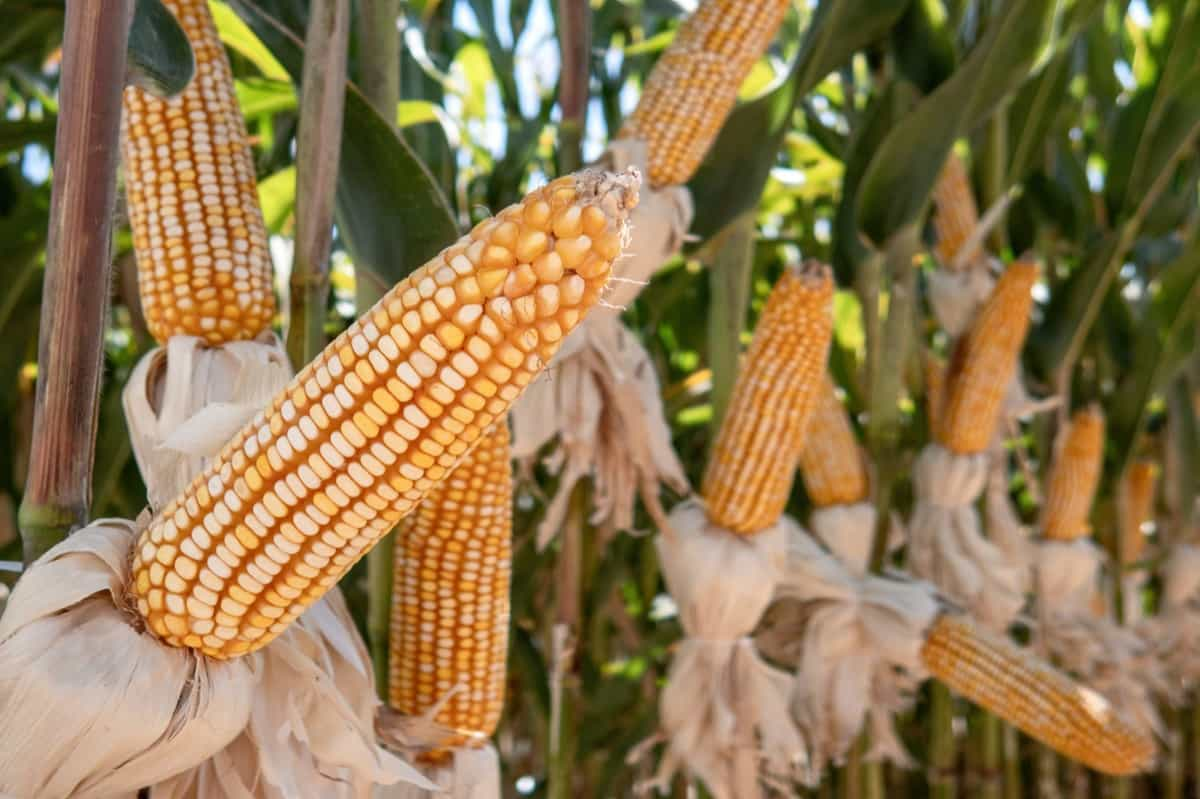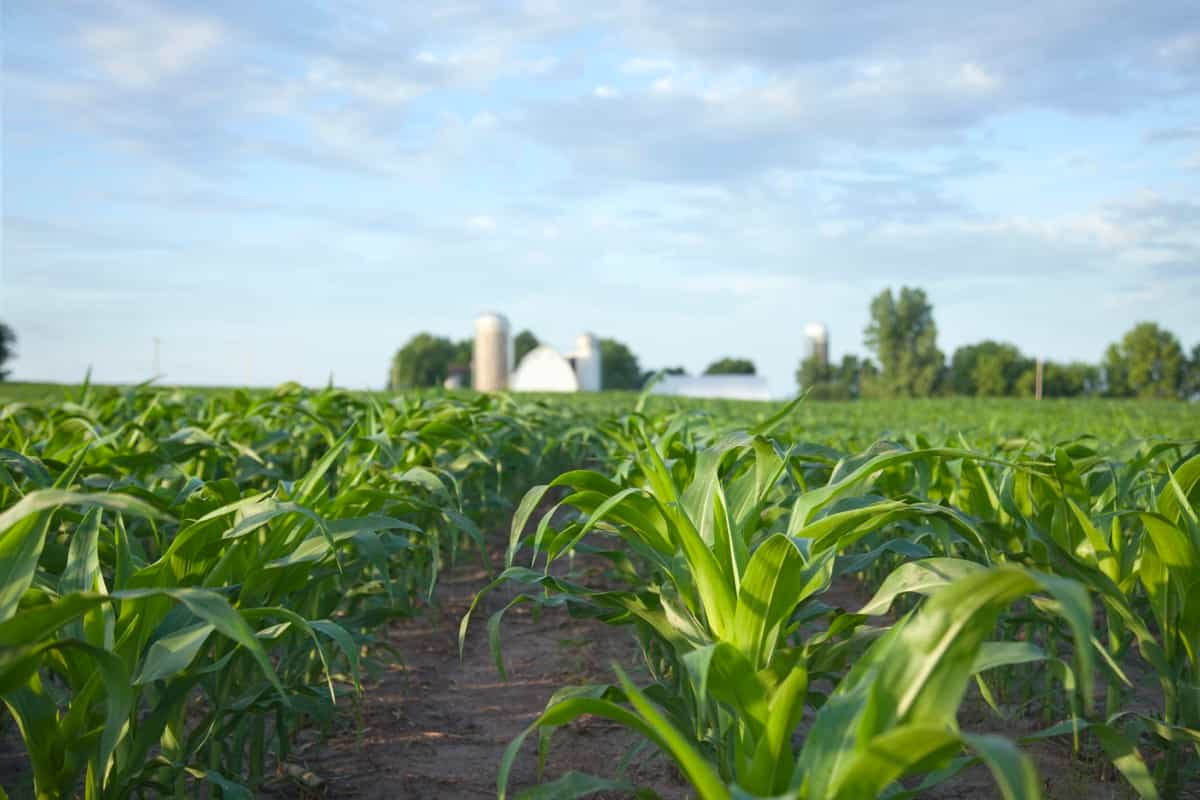Corn farming in Illinois is a popular agricultural pursuit with a rich history. As the top corn-producing state in the US, Illinois farmers have developed tried-and-true methods for producing high-quality maize crops. If you’re interested in starting a corn farm in Illinois, this step-by-step guide will help you understand the process from planting to harvesting.

How to Start Corn Farming in Illinois
Understanding the Basics of Corn Farming
Before starting your corn farming venture, it’s essential to familiarise yourself with the basics. Corn (also known as maize) is a warm-season annual crop that typically takes 90-120 days from planting to harvest, depending on the variety and environmental conditions. Male and female corn flowers develop on different parts of the same plant, making it a monoecious species. The male flowers produce pollen, which fertilizes the female flowers, producing ears containing kernels.
Choosing the Right Corn Variety
Numerous corn varieties are available, each with unique characteristics such as different maturity dates, disease resistance, and yield potential. Research the varieties best suited to Illinois’s climate and your specific farming conditions. Consider factors like the expected growing season length, soil type, and availability of water resources. Consult local agricultural extension offices for guidance on the most appropriate varieties for your region.
Land Preparation For Corn Production
Proper land preparation is crucial for a successful corn crop. Start by selecting a suitable plot of land with well-draining soil and good fertility. You should have a soil test done so that you can identify the nutrient levels and the pH of the soil. This will assist you in developing a suitable fertilisation strategy.
In Illinois, corn prefers a slightly acidic to neutral pH (6.0-7.0). Clearing debris, weeds, or previous crop residues prepares the land. Plow the soil to a depth of 8-12 inches, followed by disking to break up any large clumps and create a smooth seedbed. Applying lime or sulfur to adjust the soil pH based on your soil test results if necessary.
Fertilization and Soil Management
Corn requires significant nutrients to achieve maximum yields, with nitrogen (N), phosphorus (P), and potassium (K) being the most critical. Based on your soil test results, apply the recommended amounts of N, P, and K fertilizers before planting. Use compost or manure to increase soil fertility and structure. Throughout the growing season, monitor the nutrient levels in your soil and apply additional fertilizers as needed. Be cautious not to over-fertilize, which can lead to excessive vegetative growth and reduce yields.
Planting Corn Seeds
Corn planting in Illinois typically occurs between late April and early June, depending on the specific region and weather conditions. Plant corn seeds at a depth of 1.5-2 inches, ensuring good seed-to-soil contact. The recommended row spacing for corn in Illinois is 30 inches, with seeds spaced 6-8 inches apart within the row. Use a planter or drill to ensure accurate planting seed placement and depth. Planting at the proper depth and spacing is crucial for maximizing corn yield potential.
Irrigation and Water Management
Although corn is a drought-tolerant crop, it requires consistent moisture for optimum growth and yield. In Illinois, rainfall is typically sufficient for corn production. However, supplemental irrigation may be necessary during dry periods or in areas with limited rainfall. Monitor soil moisture levels regularly and apply water to maintain optimal growth.
In case you missed it: How to Grow Baby Corn on Terrace: A Guide for Planting to Harvest

Weed, Pest, and Disease management
Effective weed, pest, and disease management are essential for successful corn farming. Reduce the likelihood of pesticide resistance by adopting an IPM strategy that uses fewer chemical pesticides. IPM strategies include crop rotation, resistant varieties, and biological control methods. Weed control is particularly important during the early stages of corn growth when weeds can outcompete the crop for resources. Use a mix of pre- and post-emergent pesticides and mechanical methods, such as weeding, to keep weeds under control.
Scout your fields regularly for signs of pests and diseases. Common corn pests in Illinois include European corn borer, corn rootworm, and armyworm. Various diseases, including grey leaf spot, northern corn leaf blight, and common rust may negatively impact corn output. Implement appropriate control measures based on the specific pest or disease pressure, such as insecticides or fungicides.
Monitoring Crop Growth and Development
Regularly inspect your corn crop to assess its overall health and development. Look for signs of nutrient deficiencies, pest infestations, or disease, and address any issues promptly. Monitor the crop’s growth stages, such as the development of tassels (male flowers) and silks (female flowers), to help determine the timing of key management practices, such as irrigation and pest control.
Harvesting Corn
In Illinois, corn is typically harvested between late September and early November, depending on the variety and planting date. Corn is ready for harvest when the kernels have reached physiological maturity, indicated by the formation of a black layer at the base of the kernels. The kernel moisture content should be between 20-30% at this stage. Use a combine harvester to harvest the corn crop efficiently. After harvest, dry the kernels to a moisture content of 13-15% to prevent spoilage during storage.
Post-harvest Management
Proper post-harvest management is crucial for maintaining corn quality and maximizing profits. Store the harvested corn in well-ventilated, pest-free storage facilities to prevent spoilage and contamination. Monitor stored corn for signs of insect infestations or mold growth, and address any issues promptly.
Marketing your Corn Crop
Market your corn crop through channels, such as local grain elevators, cooperatives, or direct sales to end-users like livestock farmers or ethanol plants. Stay informed about current corn prices and market trends to maximize your corn farming profit.
Evaluating Corn Farming Profit
Calculate your total revenue by multiplying the yield (bushels per acre) by the current market price to determine your corn farming profit. Subtract your total production costs, including land preparation, seed, fertilizers, pesticides, labour, equipment, and other expenses. The resulting figure is your net profit per acre.
In case you missed it: How to Start Corn Farming in Iowa: Ultimate Guide for Maize Soil Preparation to Harvest

Conclusion
Corn farming in Illinois can be profitable if you follow best management practices, select suitable varieties, and carefully monitor your crop’s growth and development. With patience, dedication, and attention to detail, you can successfully start and manage a corn farm in Illinois, contributing to the state’s thriving agricultural industry.
- Feed Your Flock for Less: Top 10 Tips to Save on Chicken Feed
- Ultimate Guide to Ossabaw Island Hog: Breeding, Raising, Diet, and Care
- Hatching Answers: The Top 10 Reasons Your Chickens Aren’t Laying Eggs
- Eggs and Economics: Breaking Down the Cost of Raising Backyard Chickens
- Defend Your Greens: Proven Methods to Keep Iguanas Out of Your Garden
- Ultimate Guide to Cinnamon Queen Chicken: A Comprehensive Guide for Beginners
- Ultimate Guide to California Tan Chicken: Breeding, Raising, Diet, Egg-Production and Care
- Ultimate Guide to Marsh Daisy Chicken: Breeding, Raising, Diet, and Care
- 10 Types of Chicken Farming Businesses You Can Start for Profits